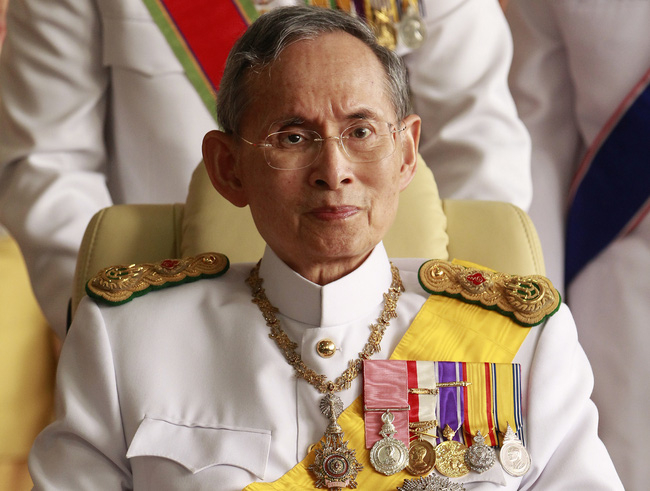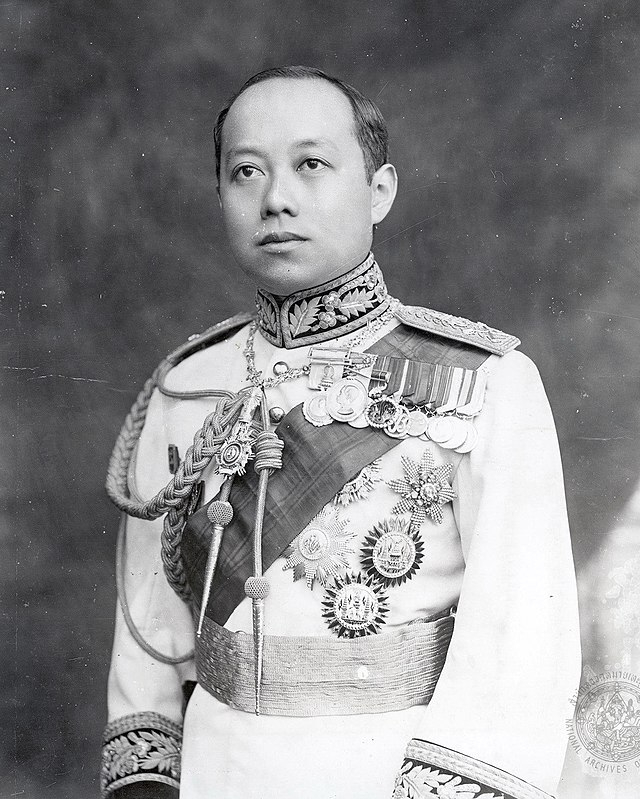Top 4 Most Important Historical Figures In Thailand
In many aspects, Thailand's illustrious past resembles a dystopian novel: there are deep societal divisions, a kind, demigod-like ruler, quick technological ... read more...advancement, and a variety of military coups. Throughout it all, a number of prominent Thais have emerged as guiding lights, reshaping the political, economic, and social landscapes of the nation, and collectively penning the next chapter in Thailand's saga. The following is a list of the most important historical figures in Thailand.
-
Bhumibol Adulyadej, one of the most important historical figures in Thailand, known as Rama IX, was Thailand's ninth king from the Chakri dynasty and was given the title King Bhumibol the Great in 1987 (formally bestowed by King Vajiralongkorn in 2019). He began his reign on June 9, 1946, and from the passing of Emperor Hirohito of Japan in 1989 until his death in 2016, he held the title of longest-reigning head of state in history. King Louis XIV and Queen Elizabeth II hold the first two positions. He ruled for 70 years and 126 days. He had a total of 30 prime ministers during his rule, starting with Pridi Banomyong and ending with Prayut Chan-o-cha.
In 2010, Forbes pegged Bhumibol's net worth at $30 billion, which included assets handled by the Crown Property Bureau, an organization that is neither privately nor publicly held. From 2008 through 2013, he topped the publication's list of the "world's richest royals." Bhumibol's net worth was once more estimated to be $30 billion in May 2014.
People in Thailand held him in the highest regard; some even saw him as being on par with the divine. Famous political activists and Thai people who opposed the king or the monarchical system were frequently exiled or subjected to recurrent jail. However, a lot of cases were dismissed before being tried or subsequently granted a royal pardon. On October 26, 2017, he was cremated at the royal crematorium in Sanam Luang. Maha Vajiralongkorn, his son, became the new monarch.

Photo: VTV.vn - King Bhumibol Adulyadej - Symbol of the country's solidarity 
Photo: Vietnamese people in Thailand - King Bhumibol Adulyadej – the living saint of the Thai people - Vietnamese people in -
King Mongkut's ninth child, Chulalongkorn, was acknowledged as the rightful heir to the throne because he was the first to be born to a royal queen. When his father passed away in October 1868, he was only 15 years old, and Somdet Chao Phraya Si Suriyawong served as his regent. Siam's king Chulalongkorn evaded colonial rule and started sweeping reforms.
The youthful monarch instituted a number of ambitious changes after being crowned in November 1873, starting with the abolishment of slavery, the enhancement of judicial and financial institutions, and the establishment of appointed legislative councils. His dedication to reforms based on Western ideals, which he believed were essential for Siam's existence, enraged conservative court factions and sparked a political crisis at the beginning of 1875.
Rejected by the older generation, the king made no additional reforms for the following ten years. Still, he gradually amassed a team of capable, dependable administrators with whom he started to revamp Siam's outmoded government in the middle of the 1880s. Twelve ministries, functionally organized along Western lines and in charge of such duties as provincial administration, defense, foreign affairs, justice, education, and public works, were the culmination of these stages in 1892. He established the rule of impersonal law, severely reduced arbitrary administration, put a stop to the autonomy of outlying provinces, and built the groundwork for contemporary Thai citizenship through universal military conscription and mandatory elementary education.

Photo: Pinterest - King Chulalongkorn 
Photo: Thaiger - King Chulalongkorn -
One of the most important historical figures in Thailand is Mongkut. The fourth ruler of Siam (Thailand) of the Chakri family, Rama IV, was Mongkut. From 1851 to 1868, he was in power.
Mongkut is best known outside of Thailand for his roles as the king in the 1951 musical 'The King and I' and the 1956 film 'The King and I', both of which were based on the 1946 film Anna and the King of Siam and, in turn, on a 1944 novel by an American author about Anna Leonowens' years at his court, from 1862 to 1867, which was adapted from Leonowens' memoir.During Mongkut's rule, Siam first experienced the pressure of Western expansionism. Mongkut adopted Western inventions and started Siam's technological and cultural modernization, garnering the moniker "The Father of Science and Technology" in the process.
Another notable act by Mongkut was to crown his younger sibling, Prince Chutamani, as King Pinklao in 1851, as the Second King. Mongkut said to the nation that Pinklao should be treated with the same respect as himself (as King Naresuan had done with his brother Ekathotsarot in 1583). The House of Bunnag rose to prominence under Mongkut's rule, becoming the most influential noble family in Siam.
Photo: Wikipedia - Mongkut 
Photo: Flickr - King Mongkut -
As Rama VI, Vajiravudh served as Siam's sixth king of the Chakri dynasty. He governed from October 23, 1910, and his death in 1925. The main contributions of King Vajiravudh to Siamese nationalism are his creation and promotion of it. Siam made further strides toward democracy during his rule, and the country had very little part in World War I. He founded the nation's first institution, Chulalongkorn University, and had a deep interest in Siamese history, archaeology, and literature as well as in economics, politics, and international affairs.
Thai and English were first taught to Prince Vajiravudh in the royal palace. His complete siblings included Chudadhuj Dharadilok, Tribejrutama Dhamrong, Asdang Dejavudh, Asdang Manimaya, Siriraj Kakudhabhand, and Prajadhipok, who succeeded him as King Rama VII. When Vajiravudh's half-brother Crown Prince Vajirunhis passed away in 1895, he was named the new monarch of Siam. After graduating from the Royal Military College, Sandhurst in 1898, he continued his study in Britain and received a captain's appointment in the Durham Light Infantry, which he served for three months of training in the south of England. Being from a royal family, he attended Christ Church in Oxford in 1899 to study law and history while also being a member of the prestigious Bullingdon Club. However, he had appendicitis, which prevented him from receiving his diploma in 1901.

Photo: Wikipedia - Vajiravudh 
Photo: Royal Collection Trust - Vajiravudh

























